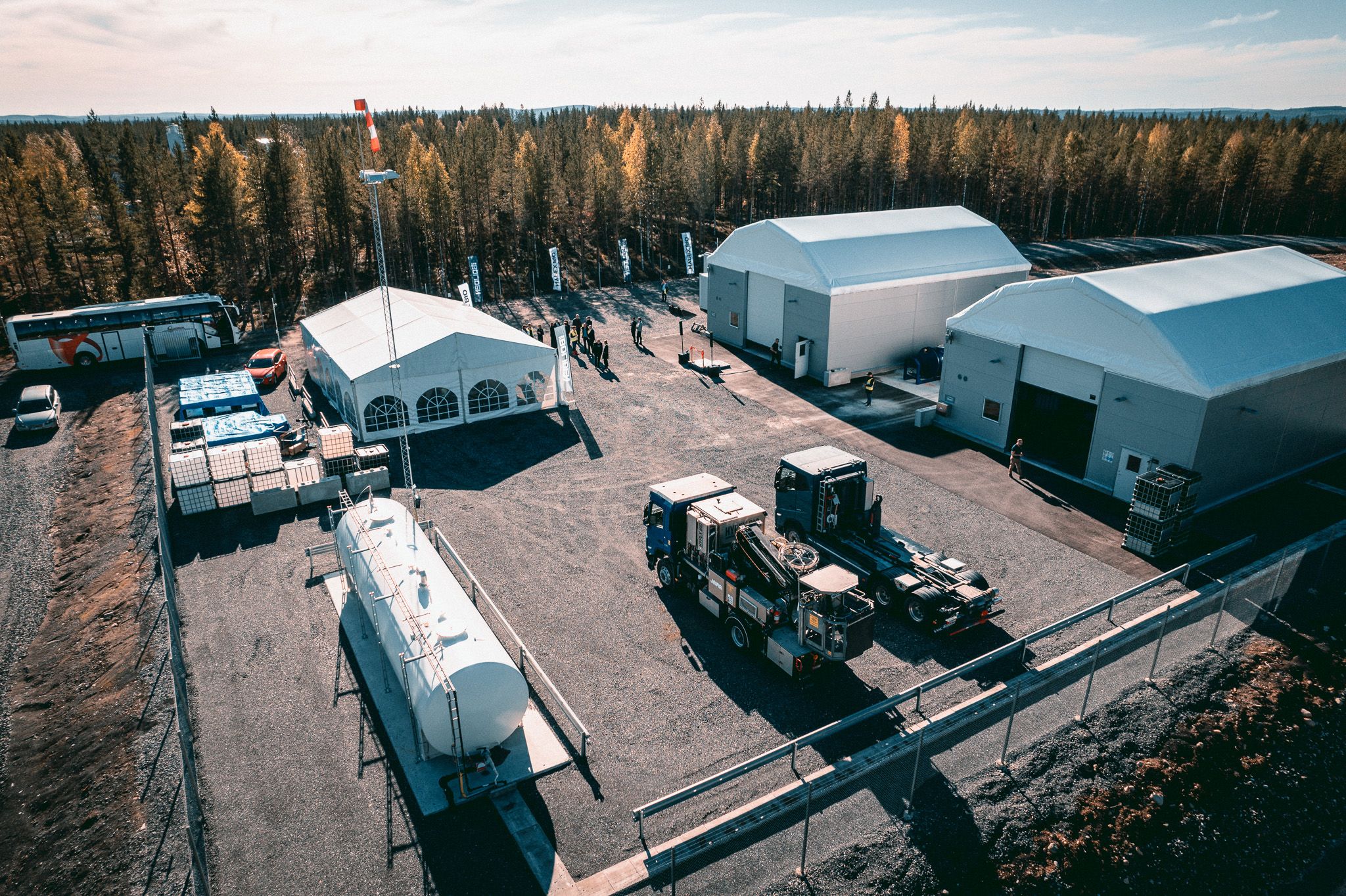Sign up for daily news updates from CleanTechnica on email. Or follow us on Google News!
The jet engine is a marvelous thing. It can push a 300-passenger aircraft through the air at speeds of 600 miles per hour or more. Today’s engines are so efficient that commercial aircraft can remain in the air long enough to fly from New York City to Sydney, Australia, without landing to refuel — a distance of 9,929 miles. Today’s jet engines burn a specialized form of kerosene known as Jet A, leaving carbon dioxide and water vapor in their wake. There is a need for sustainable aviation fuel to cut those carbon emissions, but the technology is still in its infancy.
Today, the supply of sustainable aviation fuel is limited. It accounts for only about 1% of all jet fuel used in the world. The US Department of Energy last week announced a nearly $3 billion effort to significantly boost America’s output of sustainable aviation fuel in coming years. According to Canary Media, the DOE Loan Programs Office has made conditional commitments to two companies in the Great Plains region that are working to turn crops and waste feed stocks into jet fuel.
Loan Guarantees For Sustainable Aviation Fuel Production
Montana Renewables, a subsidiary of the industrial manufacturer Calumet, could receive a loan guarantee of up to $1.44 billion to expand its existing renewable fuels facility in Great Falls, Montana. The company makes biofuels for planes and trucks using vegetable oils and leftover animal fats and greases. The expansion would allow Montana Renewables to produce about 315 million gallons per year of biofuels, most of which will be SAF — eight times more than the total US production capacity of sustainable aviation fuel in 2023.
Colorado-based Gevo is in line for a loan guarantee of $1.46 billion to build a new sustainable aviation fuel refinery in Lake Preston, South Dakota. The facility, named Net-Zero 1, would turn corn into ethanol to produce up to 60 million gallons of SAF per year. Because the corn to ethanol process creates carbon dioxide emissions, Gevo is planning to capture the CO2 at the refinery and send it via the proposed — and highly contentious — Summit Carbon Solutions pipeline to a storage site in North Dakota. Patrick Gruber, CEO of Gevo, said the announcement “marks a watershed moment for the Net-Zero 1 project and a critical step forward” in the company’s mission to produce low carbon jet fuel. The two companies will have to meet certain milestones before they can close on the federal loan guarantees and start putting the financing to work.
The projects are the first SAF-related ventures to win the backing of the Loan Programs Office. “As the aviation sector aims to meet its decarbonization goals, SAF will become increasingly vital,” said Jigar Shah, director of that program. Last week’s announcement adds to the Biden administration’s efforts to “build a thriving bio-economy” and “cut harmful emissions” nationwide, he added.
Air travel accounts for about 3.3% of total US carbon emissions every year. To start tackling that pollution, the Biden administration has set a goal of increasing the nation’s SAF production to 3 billion gallons per year by 2030 — more than 100 times the amount of SAF US airlines consumed last year.
Sustainable aviation fuel is not entirely carbon free, but aviation experts still consider it to be the most viable near-term solution for reducing emissions from air travel. The fuels can “drop in” to existing infrastructure, making them minimally disruptive for airlines to use, and can potentially reduce life-cycle carbon emissions by 50 to 80% compared to conventional jet fuel, depending on how they’re made..
The Biden administration recently announced nearly $245 million in grants through the Inflation Reduction Act (IRA) for projects that produce, transport, blend, or store alternative jet fuel. In April, the Treasury Department issued new tax credit guidelines that are expected to boost the profitability of sustainable aviation fuel refineries. SAF producers can receive $1.25 per gallon for sustainable aviation fuel that is 50% lower in lifecycle emissions than standard jet fuel. The greater the emissions reduction, the more companies can earn, up to a limit of $1.75 per gallon.
The new guidelines also provide a pathway for ethanol producers to qualify, a change that has drawn mixed reactions. Climate advocates have questioned the way the Treasury department analyzes total carbon emissions from crop-based fuels. They are concerned that it risks under-counting the full life cycle impacts of biofuels, which could result in making sustainable aviation fuel that is just as polluting as the fossil jet fuel it is meant to replace.
Biofuel trade groups and major US airlines applauded the tax credit rules, which allow producers to subtract from their overall emissions if they do things like use renewable electricity, deploy carbon capture and storage, and source crops from farmers who use so-called “climate smart” agricultural practices. Gevo says it is planning to adopt all three strategies for its plant in South Dakota.
Gevo Plan Faces Significant Hurdles
Gevo currently produces renewable natural gas in Iowa by collecting manure from dairy farms. Whether there will be enough RNG to make millions of gallons of SAF is an open question. Its Net-Zero 1 project which will deploy an alcohol to jet fuel process that uses electricity, methane, and hydrogen to transform ethanol into aviation fuel. Gevo claims its SAF facility “will reduce life cycle emissions compared to fossil jet fuel, enabling the avoidance of over 600,000 metric tons of CO2-equivalent annually.” Construction is expected to begin in 2025 with the full ramp-up of the facility slated for 2027.
Yet even with the conditional loan guarantee commitment, the Gevo proposal faces uncertainty. Its executives have said that Net-Zero 1 cannot be economically viable without access to the Summit pipeline, according to a report by the South Dakota Searchlight in May. The $8 billion Summit pipeline project would funnel carbon dioxide from about 60 ethanol plants in five states into an underground storage site in North Dakota. Landowners and neighbors of the proposed pipeline have expressed concerns about its safety, while environmentalists oppose the project in part because it furthers the country’s reliance on crop based fuels. Regulators in both North and South Dakota recently denied permits for the pipeline.
To hedge its bets, Gevo in September announced a $210 million deal to acquire an existing ethanol plant in Richardton, North Dakota, that already captures CO2 and stores it onsite in an underground rock formation. Gevo said the investment is “synergistic” with its South Dakota plant and will “mitigate risk around carbon sequestration” by potentially providing an alternative way to sequester CO2 beyond the Summit pipeline.
Montana Renewables Faces Its Own Hurdles
The other potential loan guarantee winner, Montana Renewables, likely won’t face such challenges with its planned expansion. It has been producing biofuels in Great Falls since 2022 using a process called hydro-processed esters and fatty acids, or HEFA. The vast majority of the world’s sustainable aviation fuel is made this way today. The company primarily makes HEFA for road transportation, though it is steadily shifting production to make more aviation fuel. The Montana facility is currently the largest sustainable aviation fuel refinery in the United States.
The HEFA process is energy intensive and most producers use hydrogen derived from methane to promote chemical reactions. But fuels made from waste oils and fats can still be potentially cleaner than conventional fuels, and they likely don’t need carbon capture to meet tax credit targets. The parent company of Montana Renewables started making clean hydrogen last year using waste gas from an existing bio-refinery. Montana Renewables said its expanded facility “will produce fuels with significantly lower greenhouse gas emissions” on a life cycle basis when compared to conventional jet fuel. The company expects about half of its expanded SAF capacity to be online by 2026.
Meeting the Biden administration’s 3 billion gallon sustainable aviation fuel goal will require scaling up facilities that can process HEFA feedstocks and even ethanol quickly. However, such materials are expected to become less available and more expensive over time as U.S. biofuel production for planes, trucks, and ships increases. In the long run, next generation fuels made from hydrogen and CO2 — which have the potential to be even cleaner — could wind up fueling the bulk of the country’s fleet.
The Takeaway
CleanTechnica readers will be quick to spot the potential problems with sustainable aviation fuel. The Montana Renewables process needs lots of electricity and hydrogen. We know by now, having been tutored many times by Michael Barnard, to be highly skeptical of any claimed emissions reductions that are dependent on hydrogen derived from methane. The company may harvest waste gas from a biofuel plant, but will there be enough of it to supply the billions of gallons of sustainable aviation fuel needed to lower emissions from planes appreciably? The subsidiary question is whether US taxpayers will get good value for their money from the loan guarantee?
The Gevo plan is even more problematic. Many people consider the ethanol as a fuel program that has been in force in the US for decades as little more than a scam cooked up by politicians of both parties to secure the votes of Midwestern farmers. We have to trust the DOE to ensure that this loan guarantee supplies the benefits that have been promised.
Saying something is “sustainable” is easy to do. Slap a label on something, seek out any available incentives, then laugh all the way to the bank. The possibilities for bilking the taxpayers are numerous and require careful review and constant monitoring. Reducing emissions from aircraft is a laudable goal — if in fact it can be achieved. If hydrogen is a significant part of the process, we tend to be highly skeptical of any grandiose claims about the carbon reduction benefits and are reminded of this advice from Ronald Reagan — trust, but verify.

Chip in a few dollars a month to help support independent cleantech coverage that helps to accelerate the cleantech revolution!
Have a tip for CleanTechnica? Want to advertise? Want to suggest a guest for our CleanTech Talk podcast? Contact us here.
CleanTechnica uses affiliate links. See our policy here.
CleanTechnica’s Comment Policy




